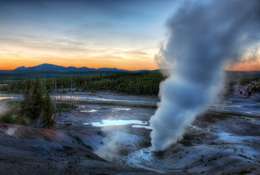Looking inside the Earth

(Phys.org) -- Defects found in rocks below the Earth’s surface have a major impact on the transmission of seismic waves, such as those caused by earthquakes, researchers at The Australian National University have discovered.
Professor Ian Jackson, from the Research School of Earth Sciences, part of the ANU College of Physical and Mathematical Sciences, said the team’s research allows us to better understand the way seismic waves travel through the mantle deep below the Earth’s surface.
“We found that defects, known as ‘dislocations’, in the structures of mantle rocks slow down the passage of seismic waves through the mantle. This new information will help us better interpret seismological models of the Earth’s internal structure,” Professor Jackson said.
“These defects have long been considered responsible for the motions of the Earth’s mantle, which have facilitated the movement of tectonic plates over millions of years. This is the first systematic study of their influence over the much shorter timescales of seismic waves.
“The rocks of the Earth’s mantle behave differently at different time scales. At periods of microseconds to nanoseconds, typical of seismic waves, they are quite rigid. However, over periods of millions of years they lose their rigidity entirely, behaving instead like fluid. Previous research has shown that dislocations contribute to this interesting change in behavior.”
To investigate the impacts of these defects on the passage of seismic waves, the team made synthetic materials in the laboratory to represent the mantle rocks below the surface. They then deformed the synthetic rocks to introduce dislocations into the materials, and tested them with novel techniques at 1-1000 second seismic timescales.
Co-author Dr. John Fitzgerald, also from the Research School of Earth Sciences, said that these findings allow for a better understanding of how the materials below the Earth’s surface transmit seismic waves, such as those associated with earthquakes.
“It tells us that the same defects that allow the long-term movement of the tectonic plates also have an important influence on the way seismic waves travel through the Earth’s mantle. Such insights from the laboratory will help ‘calibrate’ the seismological probe of the Earth’s internal structure – yielding tighter constraints on its thermal regime and long-term evolution,” Dr. Fitzgerald said.
The paper, "Dislocation Damping and Anisotropic Seismic Wave Attenuation in the Earth’s Upper Mantle," was published today in Science.
Provided by Australian National University










.jpg)







